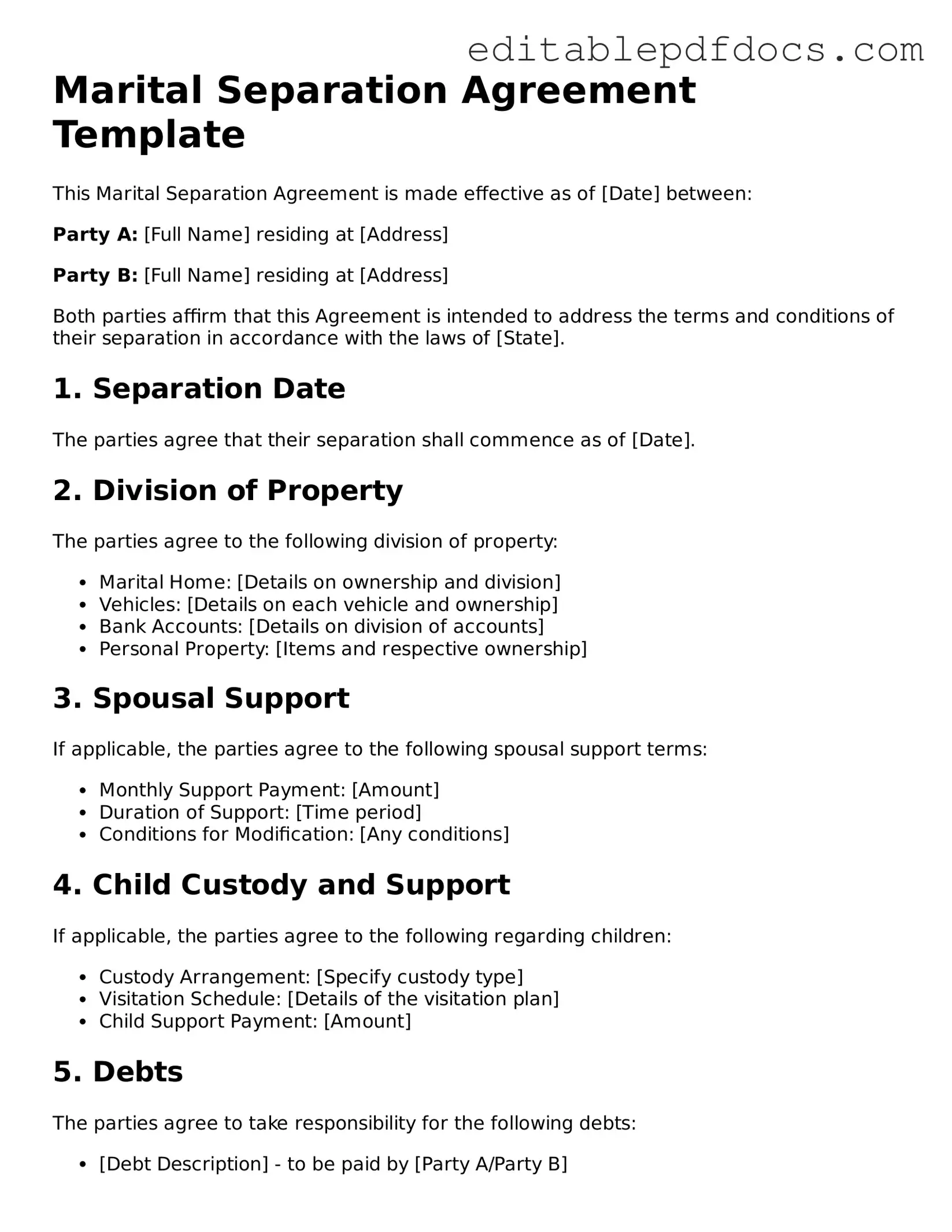Filling out a Marital Separation Agreement can be a complex process, and many individuals make common mistakes that can lead to complications down the road. One frequent error is failing to provide accurate personal information. This includes names, addresses, and dates of birth. Inaccuracies can create confusion and may even delay the legal process.
Another common mistake is neglecting to address all assets and debts. Couples often overlook certain items, such as personal property or joint accounts, which can lead to disputes later. It is crucial to list everything comprehensively to ensure a fair separation.
Many individuals also underestimate the importance of including specific terms regarding child custody and support. Without clear agreements, misunderstandings can arise, affecting the well-being of the children involved. Clearly defined arrangements help prevent future conflicts.
People frequently forget to consider tax implications when separating assets. Failing to account for how property division will affect taxes can lead to unexpected financial burdens. It's wise to consult with a financial advisor to understand these consequences.
Additionally, individuals often rush through the process without fully understanding the terms they are agreeing to. This can result in unintentional waivers of rights or obligations. Taking the time to review each section carefully ensures that all parties are aware of their commitments.
Another mistake is not having the agreement notarized. While it may seem unnecessary, notarization adds an extra layer of legitimacy to the document. This can be particularly important if disputes arise in the future.
Some individuals mistakenly believe that a verbal agreement is sufficient. However, a Marital Separation Agreement should always be in writing to provide clear evidence of the terms agreed upon. Relying on verbal commitments can lead to misunderstandings.
Moreover, failing to update the agreement after significant life changes can pose problems. Changes in income, employment, or family dynamics may necessitate revisions. Regularly reviewing and updating the agreement helps maintain its relevance and effectiveness.
Finally, individuals often overlook the importance of legal advice. While it may seem tempting to fill out the form independently, consulting with a legal professional can provide valuable insights. Legal experts can help ensure that the agreement is fair, comprehensive, and compliant with state laws.
